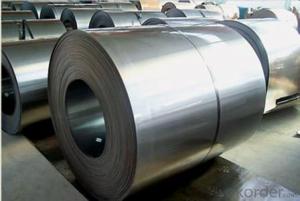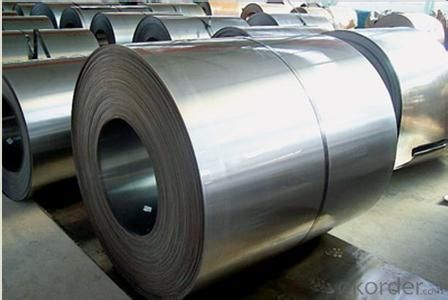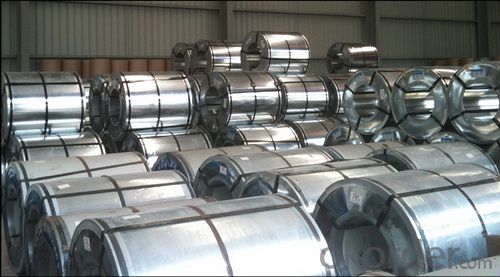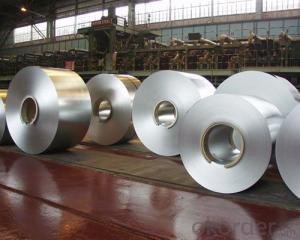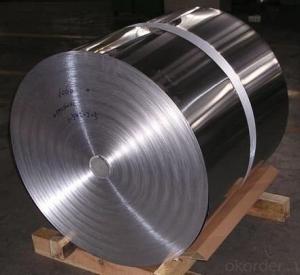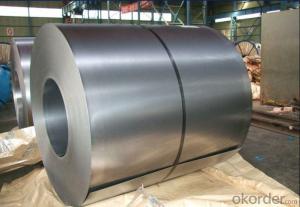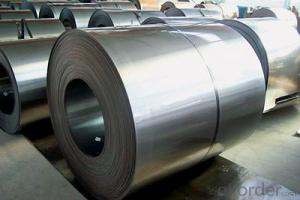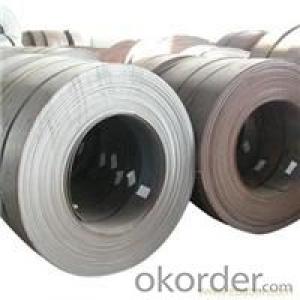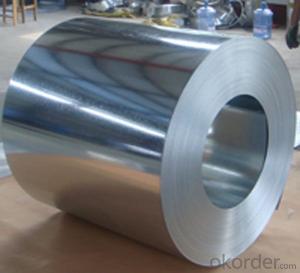Cold Rolled Steel Coil with First Class Quality and Wide Reputation
- Loading Port:
- Shanghai
- Payment Terms:
- TT OR LC
- Min Order Qty:
- 50 m.t.
- Supply Capability:
- 10000 m.t./month
OKorder Service Pledge
OKorder Financial Service
You Might Also Like
1.Structure of Cold Rolled Steel Description:
The raw material of cold rolled steel coil/sheet is high quality hot rolled product, and after pickling continuous rolling, degreasing, annealing,skin pass,slitting and cut to length line etc. Along with it many kinds of new technology and new process of global cold rolling production have been applied. Therefore the quality of the goods could be guaranteed. The product is widely used in outdoor and interior decoration, furnishing manufacturing, home appliance, automobile etc.
2.Main Features of the Cold Rolled Steel:
• Excellent process capability
• Smooth and flat surface
• Workability, durability
• Excellent heat resistance performance
• High strength
• Good formability
• Good visual effect
3.Cold Rolled Steel Images
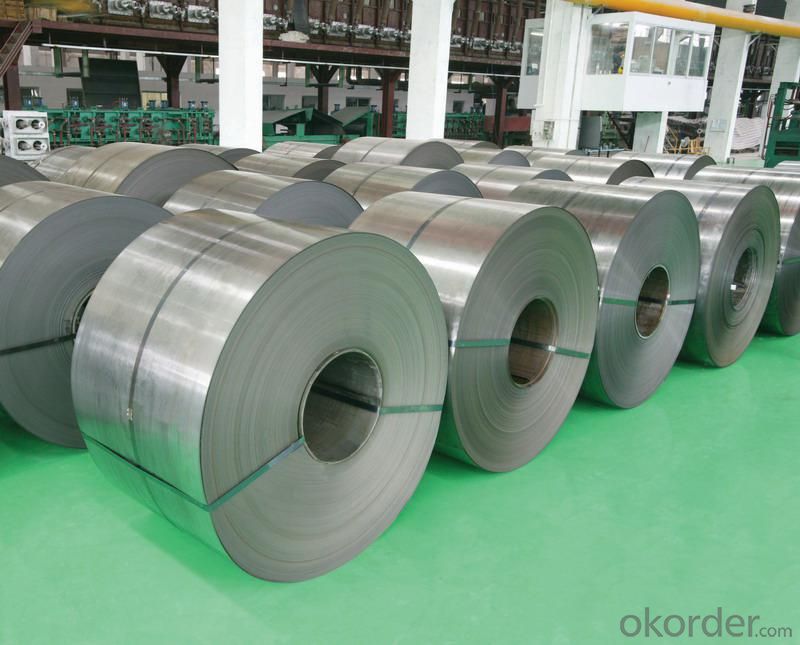
4.Cold Rolled Steel Specification
Standard:AISI,ASTM,DIN,GB,JIS,JIS G3302 ASTM 653M EN10142
Grade: Q195~Q345
Thickness: 0.16mm~1.5mm,0.16-1.5mm
Width: 1250,600-1250mm
Coil weight:3-12 MT
Coil ID:508/610mm
Chemical composition:
C | Si | Mn | Cr | Ni | P | S |
0.150 | 0.476 | 11.231 | 12.50 | 0.900 | 0.039 | 0.010
|
5.FAQ of Cold Rolled Steel
We have organized several common questions for our clients,may help you sincerely:
1.How about your company?
A world class manufacturer & supplier of castings forging in carbon steel and alloy steel,is one of the large-scale professional investment casting production bases in China,consisting of both casting foundry forging and machining factory. Annually more than 8000 tons Precision casting and forging parts are exported to markets in Europe,America and Japan. OEM casting and forging service available according to customer’s requirements.
2.How to guarantee the quality of the products?
We have established the international advanced quality management system,every link from raw material to final product we have strict quality test;We resolutely put an end to unqualified products flowing into the market. At the same time, we will provide necessary follow-up service assurance.
3. How long can we receive the product after purchase?
Usually within thirty working days after receiving buyer’s advance payment or LC. We will arrange the factory manufacturing as soon as possible. The cargo readiness usually takes 15-25 days, but the shipment will depend on the vessel situation.
- Q: Are Danielle steel books good to read. Im 15 , but do I have to wait until Im a bit older.
- Wait until you are eighty, the dementia will make the process less painful Otherwise, you know best how mature you are and Danielle Steel is sugary romance, not really sex.
- Q: What are the different methods of tempering steel coils?
- There exist numerous techniques for tempering steel coils, each possessing unique advantages and disadvantages. Some of the most prevalent techniques include: 1. Air cooling: This method, the simplest and most commonly employed, involves heating the coils to a specific temperature and allowing them to cool naturally in the surrounding air. Although relatively speedy and cost-effective, this technique can result in uneven cooling and may lack precise control over the final properties of the steel. 2. Water quenching: In this approach, the steel coils are heated and then rapidly cooled by immersing them in a water bath. Water quenching provides a swifter and more controlled cooling rate than air cooling, resulting in increased hardness and strength. However, it may also cause heightened distortion and the development of internal stresses in the steel. 3. Oil quenching: Similar to water quenching, this method entails immersing the steel coils in an oil bath to rapidly cool them. Oil quenching offers a slower and more uniform cooling rate in comparison to water quenching, leading to reduced distortion and internal stresses. Nevertheless, it yields slightly lower hardness and strength than water quenching. 4. Salt bath quenching: This technique necessitates immersing the steel coils in a heated bath of molten salt for rapid cooling. Salt bath quenching ensures an even and controlled cooling rate, resulting in improved hardness and strength compared to air or water quenching. However, it requires specialized equipment and may not be suitable for all steel types. 5. Induction hardening: In this method, the steel coils undergo induction heating before being rapidly cooled using air, water, or oil quenching. Induction hardening permits precise control over the heating and cooling process, thereby achieving specific hardness and strength properties in desired areas of the steel. Nonetheless, it demands specialized equipment and is generally employed for specific applications or sections of the steel coils. Ultimately, the choice of tempering method relies on various factors, including the desired properties of the steel coils, the type of steel employed, and the specific requirements of the end application.
- Q: How are steel coils used in the manufacturing of agricultural sprayers?
- Steel coils are used in the manufacturing of agricultural sprayers primarily for constructing the frames, supports, and structural components of the sprayers. The high strength and durability of steel make it suitable for withstanding the harsh conditions and heavy loads associated with agricultural operations.
- Q: How are steel coils used in the food processing industry?
- The food processing industry commonly uses steel coils for various purposes. One primary use is in the production of food packaging materials like cans and containers. These coils are transformed into thin sheets or strips and then shaped and sized for packaging different food products. Steel coils are also utilized in manufacturing equipment and machinery used in food processing plants. This includes crucial machines like conveyors, mixers, and slicers, which enable efficient and automated food processing. Steel's durability and strength make it an ideal material for these types of equipment, as it can withstand heavy usage and maintain its structural integrity. Additionally, steel coils are used in constructing storage and refrigeration facilities within the food processing industry. These coils are transformed into durable and insulated panels that create walls and ceilings in cold rooms, freezers, and warehouses. Steel's excellent thermal properties help maintain the desired temperature and prevent spoilage of perishable food items. Moreover, steel coils are employed in the production of cooking and baking equipment, such as ovens and grills. These coils are transformed into heating elements that provide consistent and efficient heat distribution during the food preparation process. This ensures that food is cooked or baked evenly, resulting in high-quality and delicious products. Overall, steel coils play a crucial role in the food processing industry by providing necessary materials for packaging, equipment, and infrastructure. Their strength, durability, and thermal properties make them a preferred choice for various applications within this industry, ensuring the production of safe and high-quality food products.
- Q: What are the different types of steel coil storage systems used during processing?
- There are various types of steel coil storage systems used during processing, including coil racks, coil cradles, coil saddles, coil blocks, and coil pads. These systems provide a safe and organized way to store steel coils, ensuring easy access, efficient handling, and minimizing the risk of damage.
- Q: What is the role of steel coils in the production of storage tanks?
- Steel coils are used in the production of storage tanks as they provide the necessary material for constructing the tank's shell. The coils are shaped and welded together to form the cylindrical structure, ensuring strength and durability. Additionally, the use of steel coils allows for customization, enabling the tanks to be built to specific sizes and capacities.
- Q: How are steel coils used in the production of automotive stampings?
- Automotive stampings heavily rely on steel coils, which are vital for their production. These coils are typically crafted from top-notch steel and are cut into specific measurements to meet automotive manufacturers' specifications. To begin the process of using steel coils for automotive stampings, the steel must first be uncoiled. This task is accomplished by a machine called a decoiler, which unwinds the coil and feeds it into the stamping machine. By utilizing the decoiler, a consistent supply of steel is ensured for the stamping process. Once the steel coil is unwound, it is inserted into the stamping machine. Equipped with a die specifically designed for shaping the steel into desired automotive components, the machine commences its work. The die is capable of creating intricate and accurate shapes, such as car body panels, doors, fenders, and structural elements. By applying force, the stamping machine presses the steel coil against the die, forming it into the desired shape. The high-quality steel utilized in the coils guarantees that the stamped components possess the necessary strength and durability required for automotive applications. Following the stamping process, the stamped components undergo a thorough inspection to assess their quality and precision. Any flaws or defects are identified and rectified prior to the components being sent for further processing, including painting, welding, or assembly. In conclusion, steel coils are of utmost importance in the production of automotive stampings. They provide a continuous supply of high-quality steel, which is skillfully shaped into precise and long-lasting automotive components. The utilization of steel coils ensures that the automotive stampings adhere to the required standards for strength, durability, and precision.
- Q: What are the common welding techniques used for steel coils?
- Steel coils can be welded using different techniques, such as shielded metal arc welding (SMAW), gas metal arc welding (GMAW), and flux-cored arc welding (FCAW). SMAW, also known as stick welding, involves creating an arc between the welding electrode and the base material using an electric current. The electrode is coated with flux, which shields the weld from atmospheric contamination. This versatile technique can be used for both thick and thin steel coils. GMAW, commonly known as MIG welding, is an automated process that uses a continuous wire electrode and shielding gas. The electrode is fed through a welding gun, and an electric current creates an arc with the base material. This fast and efficient technique is suitable for high-volume production of steel coils. FCAW is a variation of GMAW that uses a tubular electrode filled with flux instead of a solid wire. The flux provides shielding gas and additional fluxing agents to protect the weld from impurities. FCAW is often preferred for welding thicker steel coils due to its better penetration and higher deposition rates. In addition to these techniques, laser welding and electron beam welding can be used for specific applications in steel coil manufacturing. These methods offer precise and high-quality welds but are typically more expensive and require specialized equipment. Ultimately, the choice of welding technique depends on factors such as material thickness, production volume, and specific product requirements.
- Q: How are steel coils straightened?
- Steel coils are straightened through a process called leveling, which involves passing the coils through a series of rollers that apply pressure to remove any bends or curves. This process effectively straightens the steel coils, making them ready for further processing or use in various applications.
- Q: I need to know what steel's weakness is.
- look okorder
Send your message to us
Cold Rolled Steel Coil with First Class Quality and Wide Reputation
- Loading Port:
- Shanghai
- Payment Terms:
- TT OR LC
- Min Order Qty:
- 50 m.t.
- Supply Capability:
- 10000 m.t./month
OKorder Service Pledge
OKorder Financial Service
Similar products
Hot products
Hot Searches
Related keywords
